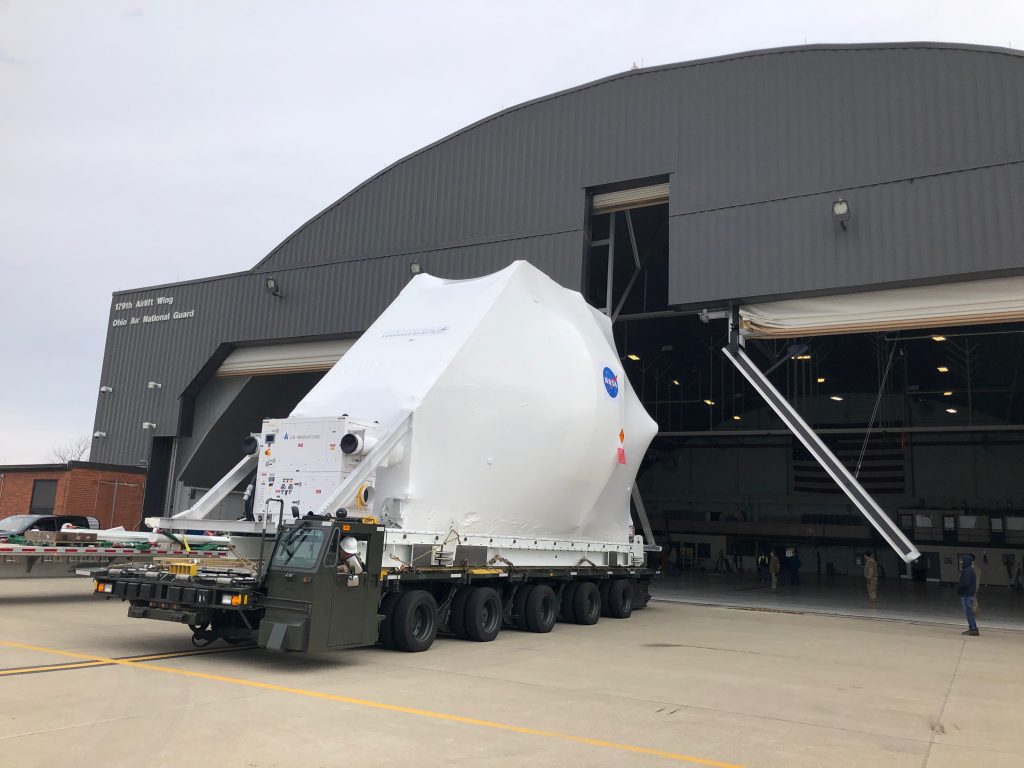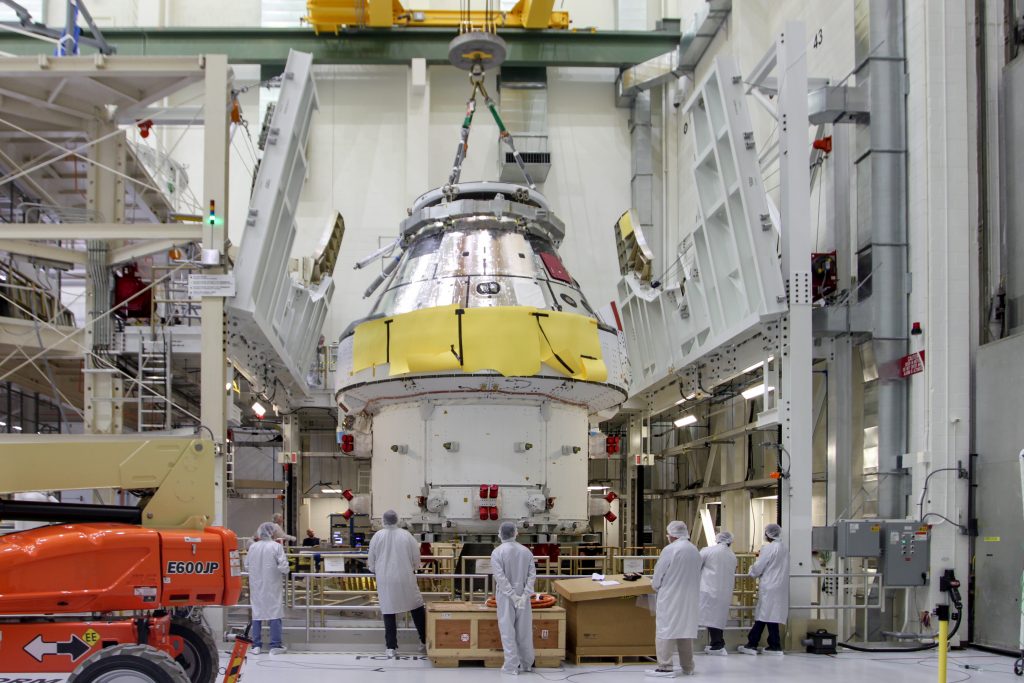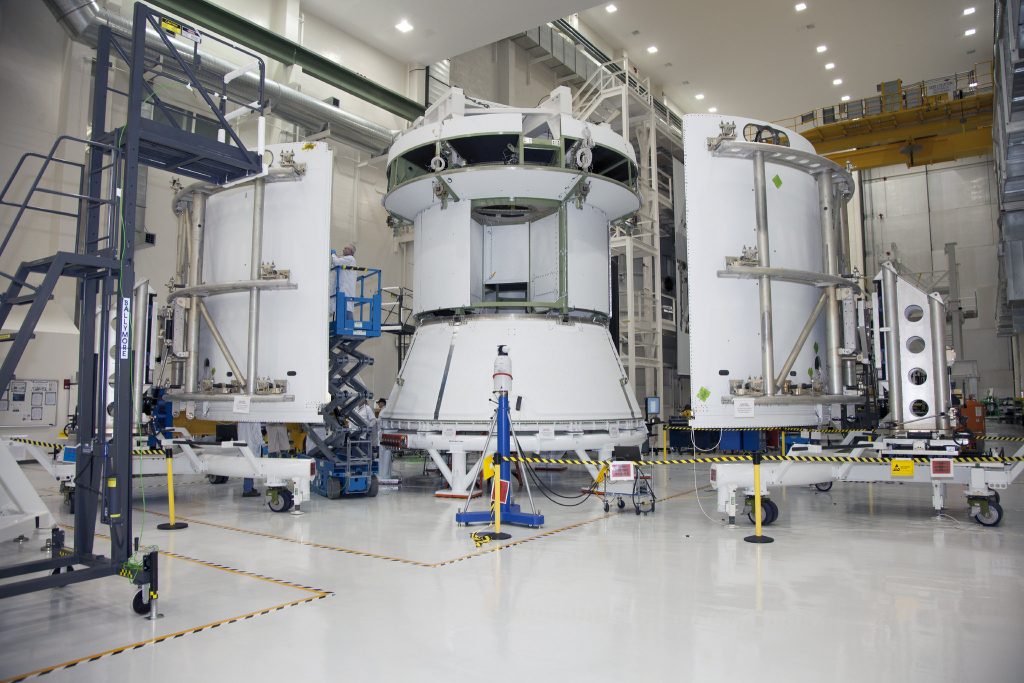The first Orion spacecraft with the European Service Module returned to the Operations and Checkout facility at NASA’s Kennedy Space Center in Florida, USA, on 26 March. The Artemis 1 spacecraft spent almost four months at NASA’s Plum Brook Station for space environment and electromagnetic interference tests inside a chamber simulating the vacuum of space, and has now returned for the final processing steps before it is ready for launch.

Shipping a spacecraft the size of a typical two-story European house is no easy task, so first Orion was unpacked from its protective ‘shrink-wrap’ and tested for any damage. Then it was rotated from its horizontal shipping position into the vertical launch position using a specially-made ‘verticator’ tool. While at the Operations and Checkout building, the Artemis 1 spacecraft will spend most of its time in a Final Assembly and Test cell that allows for final testing, and installing new elements for vehicle closeout.
The Spacecraft Performance Test was completed on 21 April with no problems encountered. This test checks that Orion is performing the same way as before it was flown to Plum Brook Station and back.

New software is now being loaded into the spacecraft and ‘dry’ propulsion tests will follow (without fuelling). Next up are leak checks of the hardware that provides environmental control such as air and water for the astronauts in missions from Artemis 2 onwards.
Road to launch
With Orion back at Kennedy Space Center, the road to launch is getting closer and closer. Once the tests above are completed, the Solar Array Wings will be re-installed on the service module and their release mechanisms tested.
With that installation, the spacecraft is practically complete and the three Spacecraft Adapter Jettisoned (SAJ) panels will be installed around Orion. These panels improve aerodynamics to the rocket launch and protect the Orion spacecraft. They will be discarded just eight minutes after launch as Orion uncouples from the SLS rocket that pushes it into Earth orbit.

Installing the SAJ panels will be a milestone for the European Service Module teams in Europe and Kennedy Space Center, as Orion will no longer be visible until the spacecraft is… in space.
With the panels installed, Orion will be officially handed over to NASA’s ground systems team. Likened to handing over the keys to a car, the Exploration Ground Systems team will take over control and prepare the spacecraft for launch.

Fuelling of the Service Module before launch will be done at the Multi-Payload Processing Facility before moving to the Launch Abort System Facility to integrate the launch abort system onto the crew-service module stack. After stacking, then entire Orion spacecraft will be transported to the Vehicle Assembly Building and placed on the Space Launch System rocket for the move to the pad in preparation for the countdown to launch Orion forward to the Moon.

 Automated Transfer Vehicle page
Automated Transfer Vehicle page ATV blog archive
ATV blog archive
 NASA Orion page
NASA Orion page NASA Artemis
NASA Artemis Airbus Orion page
Airbus Orion page
Discussion: no comments